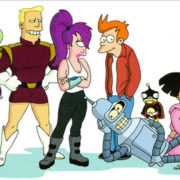
So, you’ve got everything you need to put plan put together. That’s pretty good. But if you want to put it to good use, you’re going to need an IT marketing team.
What if I told you we’re putting a crew together?
Well, not us. More like, you.
Choosing your marketing team, as well as who’s going to lead that team, will be instrumental to your success. But how do you know who to hire first? Where do you even begin tackling the monster that is assembling an IT marketing team?
Read on and we’ll tell you.
 Who comes first?
Who comes first?
When you have no marketing team, you’ll be a bit frazzled. Do you start with a writer that creates content? Do you first turn to a designer that can make your brand look better? Do you look immediately for a developer to keep your code in line?
In truth, all three of these positions are absolutely critical to the success of your marketing plan.
There’s a tiny little problem.
You want them all, but you can’t afford it. You’re limited by your budget, so it’s important to first keep in mind what kind of finances you’re working with.
It’s important to eventually hire specialists, but it can quickly get you stuck in a marketing budget black hole.
You see, if you hire one specialist, your budget probably won’t allow you to hire anyone else you need. To add insult to injury, you’re probably won’t see many results from your specialist without the entire team present, either.
The truth is that the vast majority of MSPs aren’t able to drop tons of money on an entire marketing team right out of the gate. In other words, You’ve got to strategically build your team from the inside-out but at a pace you can manage.
Marketing leadership comes first
Now, you’re kicking things off with someone that knows IT marketing best practices.
It’s an inescapable fact – their salary will be higher. But like most things, you get what you pay for. Marketing strategists look at your IT marketing plan and figure out what exactly it takes to get it done. And then they make sure it happens according to plan.
Your marketing strategist should also be a jack of all trades.
Mind you, that doesn’t mean they need to personally write stellar copy or create award-winning designs. It means they should be able to provide requirements, spot shoddy work and work to correct it to make it adhere to the branding guidelines.
What comes next?
Now you’ve got your crown-jewel leader ready for action. You can start marketing with them at the helm. They’ll locate and manage the resources you need to get things done on time and within your budget.
What does that entail?
Typically, it will mean outsourcing some writing, or working directly with freelance designers and developers.
You’ll eventually hit a point where your budget will allow for more IT marketing team members. And, with better marketing employees, you can fine-tune your marketing message more effectively and execute your plan better than before
You’ve got your marketing strategist. That’s your leader.
But who’s next on the list?
 1. Copywriter
1. Copywriter
Wordsmith, copy author, person of letters – they go by many names, but their purpose is always the same.
Why they’re important
Copywriters are your voice.
It doesn’t really matter if you’re doing inbound or outbound marketing. Your copywriter will always create SEO-conscious, clear-toned writing that crafts your message in a way that speaks to your target audience.
The sooner you hire a good copywriter, the better. They can work directly with your marketing strategist to learn your business needs and create the language for unique email campaigns, blogs, white papers, ads, and more.
How much they cost
For copywriters, this is a tricky question.
IT can be a complex subject. You’re always teetering on the edge of both general knowledge writing (appealing to the end user) and technical writing (expertise that can be difficult and expensive to hire).
Costs vary depending on your willingness to train your copywriter in all things IT for your business. You can hire younger talent with less experience for as little as $35,000, according to Payscale.
More experienced writers typically cost more – anywhere from $50,000 to $70,000. However, they can usually turn around copy faster, address the topic more accurately and keep a more consistent tone throughout your marketing collateral.
How to get one
Finding a good copywriter that works well within your organization isn’t terribly difficult. Most organizations choose to find their writers through contract-to-hire positions.
Usually, these positions run as a test over the course of 3 months or so. If the writer is a good fit, you can always extend an offer and bring them aboard full time.
If not, you simply wait for their contract to expire. And keep looking for the right person.
 2. Designer
2. Designer
Creator, planner, artist – this person is in charge of making you look good (and consistent) no matter where or how you market.
Why they’re important
Your marketing strategist and your copywriter are both creative people, but they don’t hold a candle to your designer.
Your strategist will make the call on how your IT marketing strategy will play out. Then, your copywriter will craft the words to be powerful and meaningful.
But even if your message is well-written, it’s hard to get across to your audience on its own. Like, really hard. Designers are a fantastic addition to an IT marketing team because they give form and context to your messaging, making it more digestible and visually engaging. They’ll follow design guidelines that will keep your collateral looking unique, but consistent.
That’s also great for brand recognition and overall professionalism.
The truth is simple. People are drawn into your marketing for the art, but they stay (and take action) for the content. It’s a core 1-2 punch that makes the IT marketing world go ‘round.
How much they cost
Designers get a little more leeway than copywriters because there’s not really an IT-specific design style out there.
Payscale lists the average salary of a graphic designer at around $43,000. Much like the other positions, the final salary depends just how talented and experienced a designer you really want.
It’s also important to note that “graphic designer” is a broad term. You could find a designer with rudimentary website creation knowledge, or you could find one that knows motion graphics and basic coding.
These specialized skills can make a huge difference in hiring a standard designer or a brand visionary.
How to get one
Good designers are out there, but you need to find one that fits your organization’s style.
Since it’s unlikely that you’re going to hire a digital Picasso right off the bat, we recommend starting with a paid design intern and maybe a short-term contract with a recommended freelancer. Your design intern has the possibility to turn into a powerful asset for your IT marketing team.
On the other hand, a freelance designer may have the experience to help establish your foundational materials and then hand off to your internal team to create deliverables.
A word to the wise – even for an intern, you should ask to see a portfolio for any designer you consider. It’ll help you avoid choosing a designer with a style that doesn’t fit your brand.
 3. Developer
3. Developer
Programmer, coder, digital engineer – this is your code guru, also known as the person that will bring your website to life.
Why they’re important
In the early stages of your marketing plan, your web developer isn’t as critical as a designer or copywriter.
However, as your marketing program expands, you’ll need someone to manage your website assets. Web developers take the words of the copywriter and the art of the designer and infuse them with code-magic to truly bring them to life online.
Data management, site animations, web security, user experience optimization – web developers are responsible for many of the hyper-critical aspects of your website marketing framework.
After all, your marketing collateral leads back to your website. It has to be at the top of its game if it’s going to effectively convert leads into sales.
How much they cost
The average salary of a web developer varies greatly.
Web developer salaries depend on previous experience and whether they’re experienced in front end, back end, or full stack development.
Front end developers are responsible primarily for the parts of an application that users interact with. That means interfaces, site responses, and user experience design.
Costs to hire front end specialists are usually $68,000 on average.
Back end developers deal with site architecture and more complex coding languages. They create manageable and durable site structures upon which your marketing sits.
Costs to hire back end specialists are usually $67,000 on average.
Full stack developers know both of the skill sets for front end and back end developers. Since they’re largely development-autonomous, they do the brunt of the work without any help.
They’re at the top of the pay range at around $76,000 on average.
How to get one
It’s actually fairly tricky to hire a talented and competent developer if you don’t know what you’re looking for.
If you’re lucky, your marketing strategist (or anyone else in your company) has rudimentary development knowledge, and they can ask candidates basic qualifying questions and evaluate an online portfolio of work.
Otherwise, you’ll need to test them during an interview. Make sure they can recreate a basic web page (such as Google). When you review their portfolio of created websites, ask how different functions work, and how they coded them, and even why.
Additionally, you’ll want to find developers that are already familiar with coding for your chosen environment (such as WordPress, Wix, etc.). And, be sure to inquire about their familiarity with best practices for the deliverables you need.
If they answer these questions succinctly and confidently, you’ve found your first developer.
Your IT marketing team, assembled
Of course, there are many more roles out there for in-house IT marketing departments. You might need an editor, a dev manager, an art director, and more.
But let’s keep it simple for now. The rest can come later.
The marketing leader will craft meaningful results for you. And, following your marketing plan, you can use the full force of your talented team to market more effectively than ever before.

















